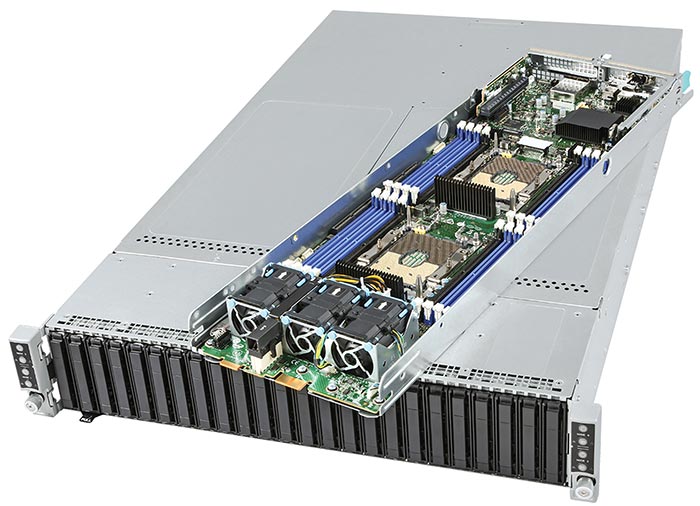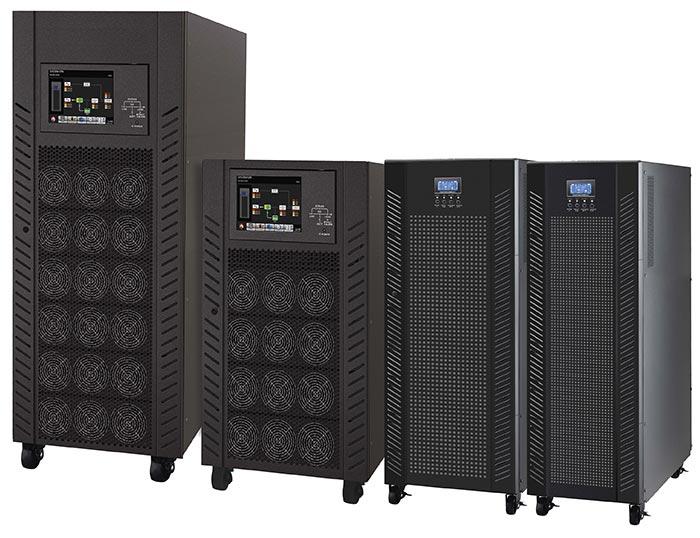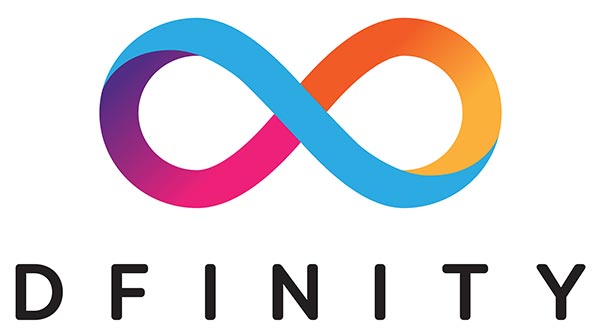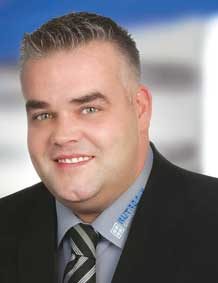 Windows and Office have been the software of choice on most computers around the world for decades. Despite this, another division at Microsoft has been growing rapidly in recent years and will soon be responsible for half of the technology company’s operating profit: the Azure cloud platform.
Windows and Office have been the software of choice on most computers around the world for decades. Despite this, another division at Microsoft has been growing rapidly in recent years and will soon be responsible for half of the technology company’s operating profit: the Azure cloud platform.
But you would be wrong to think that Microsoft plays the same leading role in the cloud business as it does in operating systems and office software. A company founded as an online book retailer back in 1994 has likewise expanded its business to offer Amazon Web Services (AWS), an even larger cloud platform. According to Statista, a leading provider of market and consumer data, AWS is responsible for about one third of cloud services, while Microsoft’s Azure accounts for around one fifth. Search specialist Google follows in third place with GCP and holds a market share of just over 9%. Another player in the market for B2B cloud solutions is IBM, with a share of the market of roughly 6%.
But cloud offerings are not just a US phenomenon: Chinese company Alibaba has also set up a platform. However, due to fears about the Chinese government’s access to data, the company is having trouble gaining the trust of users in the West and its market share is still small. After all, data is the new gold, and people are somewhat reluctant to transfer their gold to someone under the control of a government where conflicts of interest in terms of data protection, economic growth, knowledge advantage, and leadership are inevitable.
Two approaches for more data sovereignty
All that said, US providers also need to retain or regain sovereignty with regard to data and information. That, however, is not 100% feasible since Azure, AWS, GCP, and the IBM Cloud offer unique services for which there are few alternatives. Nevertheless, for the majority of data processing tasks, such as data archiving, the use of VM (virtual machines), SaaS (Software as a Service), PaaS (Platform as a Service), IaaS (Infrastructure as a Service), or the use of containers (e.g. Docker), companies will, in the near future, be able to switch to solutions that technically speaking offer the same level of security, and even a higher one when it comes to data protection and political influence: Gaia-X and the Internet Computer Protocol (ICP).
They are based on very different technical concepts: Gaia-X focuses on the creation of policies, standards, federated identity, and access management, meaning users do not have to rely on specific software or hardware. In contrast, ICP is a closed network that is not (!) based on previous protocols such as TCP/IP. It is rather a fully independent software approach that even has its own programming language. Despite this, both initiatives have the same goal: to provide an independent framework of solutions and services based on international standards and European values, which is available to all providers. Further, both approaches require immense processing power.
Gaia-X connects elements via open interfaces and standards
As goddess of the earth, Gaia is one of the first deities in Greek mythology. She is also the namesake of the project for a high-performance, competitive, secure, and trustworthy data infrastructure for Europe. The European project is still in its infancy: it was presented to the general public at the Digital Summit 2019 in Dortmund. The Gaia-X European Association for Data and Cloud was first founded in February 2021 and has its official headquarters in Brussels.
The intention is to use Gaia-X to interconnect various elements via open interfaces and standards in order to link data and create an innovation platform. For instance, it uses the rulebook of the IDSA (International Data Spaces Association), meaning customers do not have to set up all the security concepts from scratch for each new project.
An example of an innovation based on the Gaia-X infrastructure is Catena-X, which was specifically created for the automotive industry and its supply chains. It is intended to enable the fully automated and secure exchange of traffic-related data à la car-to-car and car-to-infrastructure, as well as production-related data throughout the entire supply chain from semiconductor supplier to vehicle supplier. The Catena-X Automotive Alliance was founded in May 2021. According to Oliver Ganser, Chairman of the Board and Head of Consortia Catena-X Automotive Network, the plan is to develop data concepts and to ensure they become binding for the industry within just three years.
In addition to Catena-X, various other consortia from a range of industries are likely to form soon, building on the Gaia-X infrastructure and specifying similar blockchain solutions for their value chains. The key drivers in this respect are not only the new supply chain law and a detailed carbon footprint throughout the entire value chain, but also improved traceability of legal and technical production data of the individual product finishing steps.
Internet Computer Protocol banks on distributed processing power
The Internet Computer, or Internet Computer Protocol (ICP), is being promoted by the Swiss-based Dfinity Foundation.
ICP is a distribution of data processing tasks based on blockchain technology. This means: the data is not entrusted to a cloud company but distributed in small units within a partner network depending on the available computing capacity. When processing these smart contracts, the relevant server operator receives corresponding ICP tokens. ICP tokens are the digital currency of this data processing network; they are traded on a crypto exchange like Bitcoin. The data processing of smart contracts is, therefore, decentralized and also completely encrypted and anonymous. If you want to earn ICP tokens and then exchange them for euros or dollars on a crypto exchange, you need servers that are as powerful as possible to process the smart contracts.
While the Internet Computer Project with its highly innovative – possibly disruptive – protocol as well as the corresponding programming language for customer applications has been around for many years, the ICP token only went public in May 2021. In Insights – Digital Assets: Beauty Is Not in the Eye of the Beholder, Goldman Sachs stated: “Recently, a still more ambitious blockchain-based platform, the Dfinity Internet Computer, proposes replacing the current Internet with a new paradigm in which all data and applications are hosted in a cohesive manner. Decentralized applications are already being launched with the goal of replacing centralized technology platforms such as Facebook, Google and LinkedIn.” Just two months after the launch, more than 500 developers have created applications, such as DSCVR, a decentralized social content aggregation platform similar to Reddit, but where users control not only the content but also the actual platform. Fleek is a decentralized web hosting system with numerous websites deployed, while OpenChat provides real-time decentralized, blockchain-based messaging.
Cloud 3.0 business model
Despite all their differences, the two projects also have a lot of similarities: they want to offer the highest levels of security, data sovereignty, and speed. Their ecosystems are still emerging, but their purpose makes them promising in the fight against the centralized data sovereignty of just a handful of US companies. They also offer companies that still have a bit of space left in their data centers a lucrative business model opportunity. Especially as storage space, computing capacity, and servers are in great demand for both cloud models.
When selecting and procuring energy-efficient servers or server components, it is definitely worth taking a closer look at the portfolio of a distributor. It provides a chance to compare several product providers in the same setting – and not simply on the basis of data sheets, but also with regard to soft yet essential characteristics such as long-term availability, complaint rate, goodwill behavior, and roadmap.

Figure 1: According to an Intel and Bain analysis, up to 80% of workloads will run on a cloud architecture by 2024. Intel Data Center Blocks for the cloud help accelerate and simplify the transition to the cloud. (© Intel)
High-performance servers and components
Rutronik offers ready-built servers from Advantech, Asus, Calmo, Kontron, and Intel, as well as individual components for building custom mainframes to play a high-performance role in the networks of GAIA-X or Internet Computer Protocol. For example, when generating a 3D simulation of a car accident and its impact on the individual assemblies, you need an extremely graphics-intensive server. Rutronik offers special barebone servers and very powerful graphics cards for such applications. The portfolio also includes housings, fans, CPUs, mainboards, memories, and data storage units, as well as AI and graphics accelerators.
Intel Data Center Blocks (DCB) for the cloud (Fig. 1) are pre-certified and fully validated to help accelerate and simplify the transition to the cloud. Customers can select from a number of preconfigured servers or customize a system for their unique needs. The Intel VRN2208WFAF84R server system, for example, has been designed for VMware Virtual SAN (Storage Area Network) and is based on scalable Intel Xeon processors and the Intel R2208WF0ZSR server system mainboard. It is available as standard with 1 TB of raw memory (384 GB DDR4 RAM, 1 TB DCPMM) and 24 TB of raw storage (0.48 TB boot device, 1.5 TB cache tier, 24 TB capacity tier).

Figure 2: The online UPS solution FSP EPOS protects server farms and data centers against all conceivable disturbances, such as noise, lightning, and leakage current. (© FSP)
To guarantee a powerful power supply for server parks and data centers, Rutronik offers, for example, the online UPS (Uninterruptible Power Supply) solution FSP EPOS (Fig. 2). It includes various models between 10 kVA and 200 kVA with true double conversion technology. Reliable output power is ensured by DSP technology and active power factor correction in all phases of the 50 Hz / 60 Hz frequency converter mode. The N+X battery redundancy function reduces power failure and optimizes the charging and usage behavior of battery networks. The easy-to-configure products of the EPOS series range offer users plenty of flexibility when it comes to meeting the ever-increasing power demands of IT and network environments.
FSP also offers power supplies, redundant power supplies, and UPS to ensure that smaller power consumers can also be supplied effectively and efficiently.
In contrast to traditional IT distributors, Rutronik also has many years of experience in the embedded segment, i.e. in sophisticated and robust industrial computers, and in-depth knowledge of the electronic component market. Thanks to close partnerships with suppliers of semiconductors, plug connectors, or LEDs, for example, Rutronik’s experts know how long the voltage converter chip on a mainboard will be around, how many mating cycles the M.2 interface will survive, or why there is often a tenfold difference in prices for SSDs offering exactly the same capacities, and how the controller chips of the SSD ensure the perfect balance between data security, longevity, and speed. As such, companies receive a reliable and future-proof solution.
The next crash is a matter of when, not if
The shares of the largest cloud providers Microsoft, Amazon, IBM, and Alphabet (Google) have recovered faster after the most recent stock market crash than most financial experts had predicted. Cloud growth is likely to have played its part in this development – and it has increased more than ever before due to the COVID-19 pandemic. Which crash is on the cards? Economic war, including a trade embargo? Damaged submarine cables to overseas destinations? Crashed satellites? In any case, Europe and European companies would be well advised to (also) focus on alternatives in order to reduce their dependence on US corporations.
Major US firms that dominate the top sales rankings include not only cloud-based services, but also semiconductor suppliers and distributors – and the European industry is heavily dependent on them. To regain more sovereignty, some European countries are investing in the development of advanced microprocessors and semiconductors and have launched initiatives such as the “Electronic Components and Systems for European Leadership (ECSEL) Joint Technology Initiative (JTI).” Rutronik welcomes this move and, as an internationally active broadliner with European roots, is committed to strengthening local companies while promoting global exchange in an open and cooperative manner.
Author: Bernd Hantsche, Vice President Product Marketing Embedded & Wireless
Rutronik| https://www.rutronik.com




